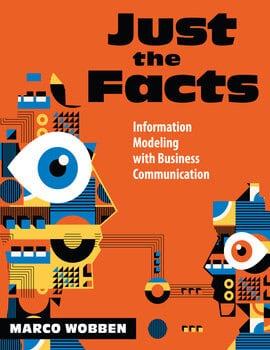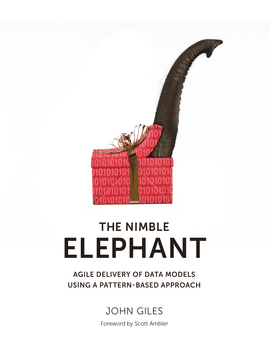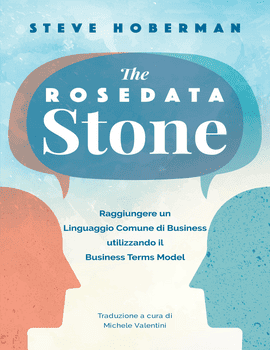Just the Facts
Just the Facts: Information Modeling with Business Communication, by Marco Wobben
Build more successful databases and applications through improved business and data understanding using Fact-oriented Modeling.
Topics
Section One: Rationale
Business Information
Historical Overview
Management Challenge
Memes and Risks
Perspective on Communication
Section Two: Business Employees and Domain Experts
Working with Facts
Section Three: Business Information Modelers
Fact-oriented Modeling
Data Structures
Information Modeling
Collecting Facts
Sorting Facts
Analyzing Facts
Values
Objects
Non-atomic Facts
Non-concrete Facts
Non-unique Facts
Different Words, Same Facts
Information Constraints
Subtype
Diagrams
Information Model Elements
Section Four: Data Modelers and Engineers
Model Transformation
Artifacts
Appendix
Transitional
Temporal
Multi-lingual
References
Books
CaseTalk
Methods
Experts
Index
Welcome to the intriguing realm where data seems to be everywhere we look. It runs in apps, drives businesses, and shapes public opinions and politics. As data affects our daily lives, we must pay more attention to what the data is about and how we communicate as human beings.
It is not the data itself, but our communication about the data that builds bridges of understanding. This book aims to bring a holistic view to three distinctive audiences, enabling all to communicate about data and collaborate more effectively. Thanks to our human capability to communicate, we can build bridges that connect people, transcend silos, and align technology in a way that propels organizations forward into this digital age.
Whether you are a business visionary, tech enthusiast, or someone navigating the ever-changing landscape of data, this book is your roadmap to a future where communication, technology, and business harmoniously coexist. As you embark on this journey, you’ll find that the book caters to three audiences:
- Business Employees and Domain Experts. The first section brings the business into focus. We address the needs of business employees and domain experts at the forefront of operations and strategy. We explore how they can harness the power of communication to contribute to the success of the organization.
- Business Information and Data Modelers. The second section delves into the realm of information modeling. Here, we cater to the audience whose expertise lies in capturing and documenting business information and ensure it lays out the guidelines to help IT provide products and services that meet business requirements.
- Developers and Engineers. The third section focuses on the developers and engineers who form the backbone of technology implementation. It dives deeper into the intricate world of data, transforming raw data into valuable information, insights, and applications.
In collaborative environments, individuals share information about their experiences. Human history began with the oral transmission of facts, progressed with the advent of the printing press, and has now reached a digital era where computers can store and process this information. Despite these advancements, the fundamental purpose of communication remains unchanged: the dissemination of information.
It’s not just about the data, data model, or information model. The act of modeling serves to communicate the needs of the organization. The act of information modeling allows us all to engage with each other using the fact-based modeling method you will apply through the many examples within these pages.
About Marco
Marco Wobben is a seasoned professional with extensive experience in information system design and implementation, focusing on fact-based modeling. Renowned as an author, product innovator, and educator, he shares his deep understanding and expertise through global lectures and training programs. His groundbreaking contributions in fact-based modeling facilitate clear and effective data communication across diverse sectors such as healthcare, finance, logistics, tourism, government, and manufacturing. Originating in the Netherlands in the 1990s, this method has been widely embraced by educational institutions worldwide, catering to learners from secondary schools to esteemed universities.
Faculty may request complimentary digital desk copies
Please complete all fields.




